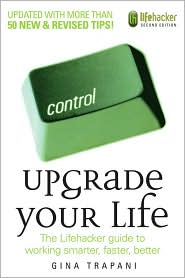9E4Y8EU5UBZD
In a couple of weeks I will be moving on to a new principal’s job at a new school. In preparation for leaving, I have been trying organize everything for the incoming principal. In the old days I suppose a principal, who was leaving, would just need to make sure everything is filed and accessible in the old file cabinet. My problem is, as a 21st Century Principal, I did not use the file cabinet in the year and a half in this position except maybe to stuff objects like Christmas cards, business cards, and all those planner samples from all those companies vying for our business. Instead, I did everything electronically and saved only electronic copies of all the documents of the trade on my hard drive. Of course I have a back up copy of everything on my portable hard drive. My organizational problem is, “How do I make all these files accessible, so that even someone who is not particularly considered a heavy computer-user, can find whatever they need easily and as quickly as possible?”
About a year ago, I purchased and read a book called Upgrade Your Life: The Lifehacker Guide to Working Smarter, Faster, Better. In that book there is a section that talks about how to make your “My Documents” folder more accessible, and I really have to thank the author, Gina Trapani, for the solution to my current dilemma. In order to make my electronic files more accessible, I could have used a solution I tried four of five years ago while trying to organize all my teaching files. In those days, I just created a series of folders and organized all the files into the folders. For example, if I had teaching materials related to poetry, I created a poetry folder and placed all related files into that folder. The first time I had to find something, I discovered the problem with organizing computer files in this manner. It literally takes forever to sort through folders, especially when you are not exactly sure which folder you placed the file in. It really did not save time. Trapani suggested doing away with folders entirely, and she suggested taking advantage of a computer filing system’s strength: it is completely searchable. So here’s how I am making my electronic files accessible.
- I started by making sure all of the electronic files were located in a single folder entitled “archive” or something similar. (As the folks at Lifehacker suggest, I got rid of all the subfolders.)
- After all the electronic files were placed in one folder, I made sure each file was tagged with one of several key words. For example, teacher evaluations were tagged with the word “evaluation,” “personnel,” or one of ten to twelve keywords I used. If I needed to, I might even add a person’s name as a tag.
- Now, to access the files, all a user needs to do is type in one of those keywords into a desktop search tool, such as Google Desktop, to pull up all files tagged with that keyword. It is then just a matter of sorting through those files rather than a file folder or multiple folders with 25 or 30 files.
My test run this afternoon worked beautifully. It did take a little time investment to ensure that all the files in storage had appropriate key words, but I have, in effect, created a way for my successor to access my electronic file cabinet. In the future, I plan to take an extra few seconds to make sure each file as it is created has appropriate tag words before I save them, especially for those files I know will have historical importance for my job.
By the way, check out Gina Trapani’s book Upgrade Your Life. It is chock full of ways to make our lives easier through simplification.
Also, check out the Lifehacker web site for lots of other great tips. It is one of my personal favorite sites.




No comment for "How to Keep Yourself or Anyone Else from Getting Lost in Your My Documents File"
Post a Comment